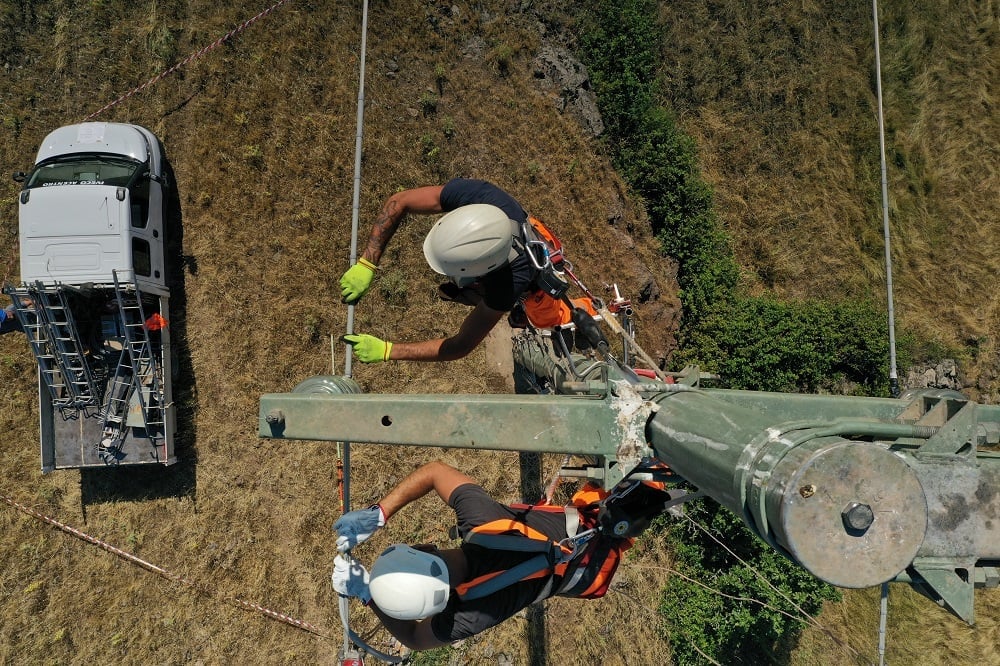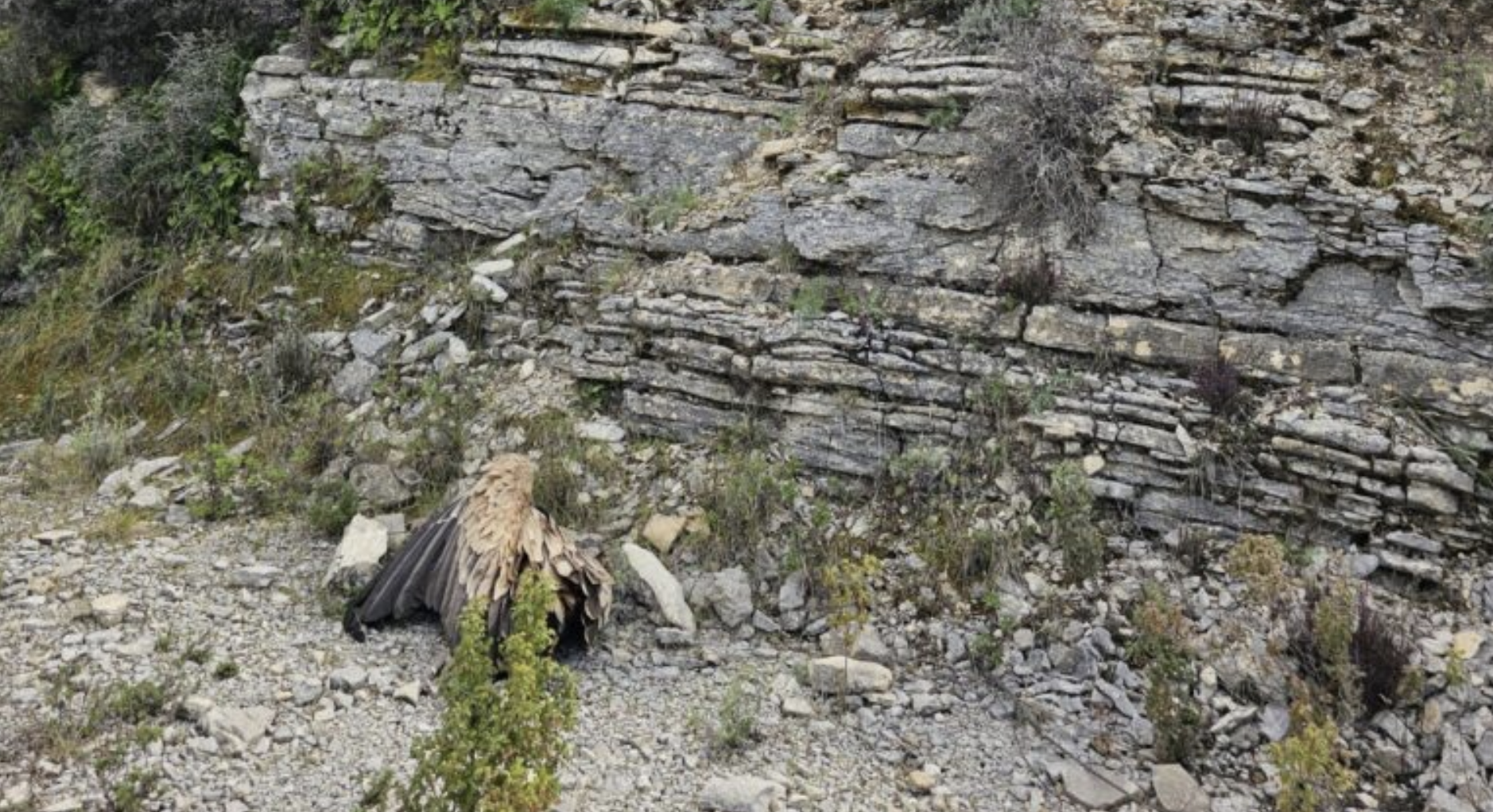Collision and electrocution by power lines are among the main causes of mortality for birds of prey, and vultures are no exception. On 23-24 May 2023, at Cagliari (Italy), researchers and conservation professionals will gather to discuss and showcase management actions to reduce these threats. The International Conference “Best practices for mitigating electrocution and collision risk” is organised in the framework of the LIFE Safe for Vultures project, co-financed by the EU’s LIFE Programme.

The importance of mitigating electrocution and collision risk
Every year, across the globe, between 2 and 12 million birds fall victim to collision with power lines or electrocution on high-voltage transmission lines. Electricity structures are estimated to be the most prevalent non-natural mortality cause for birds, especially large-bodied ones, such as vultures. Birds collide with the horizontal energy cables or die of electrocution by landing on the dangerous pylons. In Europe, cases of vultures injured or death by electrocution are often reported: a Griffon Vulture in Cyprus, a Bearded Vulture in Italy, a Cinerous Vulture in Spain are just some of the recent examples.
Measures to mitigate the risks of power lines are essential to any conservation project aimed at safeguarding these endangered species. There is a wealth of experience across Europe in implementing such measures. This international conference will be an excellent opportunity to share experiences and best practice and compare the measures that are currently being implemented in Sardinia, under the LIFE Safe for Vultures project.
Programme of the International Conference “Best practices for mitigating electrocution and collision risk”
The programme is divided in 2 sessions:
- Impacts of electrocution and collision, legal context and national approaches – with keynote speakers from Portugal, Spain and Sardinia sharing their experience; get to know the recently published IUCN Guidelines Wildlife and power lines and learn about automatic technologies to avoid collision with large birds.
- Mitigation of mortality – where we will be hearing from the experience in the French Alps by ASTERS, learn from the measures implemented in Corsica within the LIFE GypRescue and hear experiences from the Norwegian Institute for Nature Research. Research on Vulture vision and consequences for managing risk will be shared by Birmingham University and The Biodiversity Consultancy will tell us about shutdown on demand mitigation technologies.
Registrations are now open for the International Conference in Sardinia
The International Conference “Best practices for mitigating electrocution and collision risk” will take place at Hotel Regina Margherita, Viale Regina Margherita, 4 – Cagliari, Sardinia, on the 23-24 of May. Registration includes access to all the conference activities, coffee breaks, buffet lunches and the dinner on 23 May. Participation is free but limited to 100 participants, secure your place today!
Implementing anti-electrocution measures in Sardinia
To decrease the risk of collision and electrocution by power lines, measures are often implemented around the most sensitive areas for specific species, including roosting, feeding or breeding sites. Mitigation measures often include insulating cables, pylons and clamps holding the conductors and installing anti-collision markers to help birds identify the presence of cables from a distance.
In Sardinia, Italy, to ensure the long-term survival of the locally endangered population of Griffon Vultures (Gyps fulvus), mitigation actions are being carried out to decrease the risk of collision with power lines. Sensitive areas (for roosting, feeding and breeding) are chosen to be intervened and power lines are being secured. By the end of the LIFE Safe for Vultures project, in December 2026, at least 20 km of power lines will be secured in Sardinia, Italy.
The mitigation actions are being implemented by E-Distribuzione, one of the project partners and the largest electricity distributer in the island. In 2021, energy poles and power line cables were secured in the area around Pozzomaggiore, which welcomes many Griffon Vultures, especially since the establishment of feeding stations in livestock farms.

About the LIFE Safe for Vultures project

LIFE Safe for Vultures is a project co-financed by the EU’s LIFE Programme, acting as the first step to the restoration of the vulture guild in Sardinia. The University of Sassari leads the project in collaboration with Agenzia Regionale Forestas, Sardegna Corpo Forestale, E-Distribuzione and the Vulture Conservation Foundation. LIFE Safe for Vultures builds on the work of the successful LIFE Under Griffon Wings, with the ultimate objective for Griffon Vultures to regain their historic ranges and distribution areas from the central-eastern part of Sardinia to the south and at the same time promote the long-term survival of the species on the island. The project team is working to expand the network of farm feeding stations, create several anti-poison dog units to tackle wildlife poisoning, establish an additional feeding station in the south of the island, restock the population by importing 40 additional Griffon Vultures and reduce the threat of collision and electrocution with energy infrastructures.




